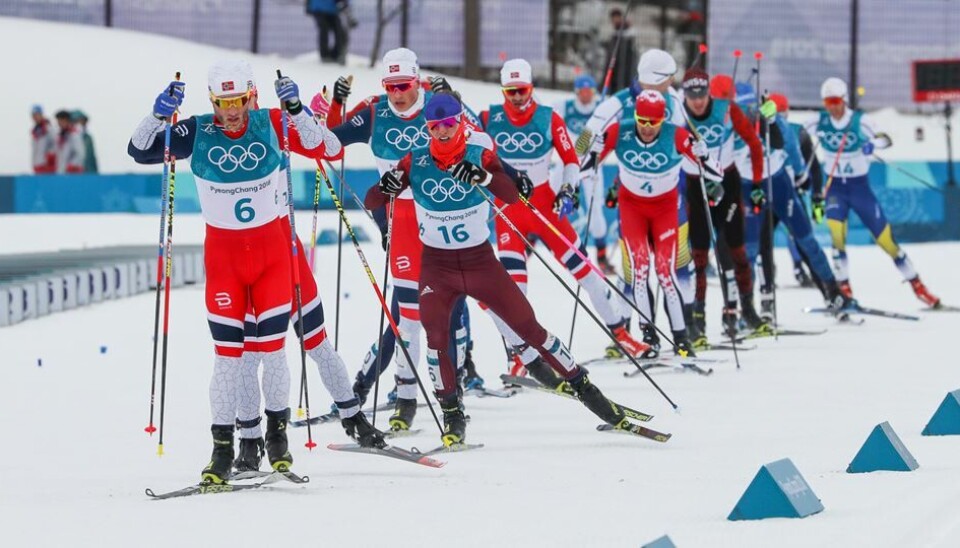THIS ARTICLE/PRESS RELEASE IS PAID FOR AND PRESENTED BY The Norwegian School of Sport Sciences - read more

Critical health problems in top athletes are being overlooked
Today's check-ups of top athletes are missing the mark. Health problems and sports injuries that can put an end to a career can easily be overlooked.
This is evident in the data from American Olympic athletes. And this happens even though a myriad of resources and medical personnel from a number of different professions are consulted in regular check-ups (periodic health evaluations) of top athletes.
An expandede and more systematic check-up using computer tools may be the solution. It’s a solution that Norwegian athletes are benefiting from - and is already used by the Olympic team.
Annual check-ups are lacking
Our top athletes: all over the world they give their all, they give us excitement and joy and defend the honour of the nation. And they appear well taken care of, with regular, thorough examinations.
Nevertheless, minor issues, nascent injuries, and, not least, mental health problems slip through the net when check-ups are carried out. One important reason is that the athletes themselves are unable to explain [their symptoms] well enough.

- In recent years, Dustin Nabhan has been affiliated with the Oslo Sports Trauma Research Centre at the Norwegian School of Sport Sciences (NIH), and now heads the Department of Medicine and Science at Canyon Ranch in Arizona, USA
- On 27 January he defended his doctoral thesis at NIH: “Preventive medicine in elite sport: the role of the periodic health evaluation”
- While working on his doctorate, he was associated with- the US Olympic & Paralympic Committee Headquarters in Colorado Springs (USOC).
Most top athletes undergo a very thorough examination about once a year. These are vital for detecting any problems and for quickly establishing the right treatment. The goal is to avoid everything from pain to permanent damage, and to enable the athletes to perform in the best possible way.
Athletes are examined by medical personnel from an average of seven different disciplines, including doctors, physiotherapists, dietitians and psychologists.
Providing faster answers
Dustin Nabhan researched how the check-ups are carried out. He revealed serious shortcomings, where some serious problems in the athletes were not detected.
“Because you have a system that reveals problems, it’s easy to think that it will capture everything, but that is not the case,” says Nabhan. “This is even true in personal examinations, face to face, with skilled professionals who know the athlete well.”
He had to experiment with different methods to identify shortcomings. And, perhaps surprisingly, the use of somewhat 'impersonal' forms proved to be an important solution, in addition to the personal conversations.
“With such forms you can ask many questions, including precise ones. Furthermore, the athlete can mark exactly where he or she feels pain on illustrations and then describe how they experience such pain,” says Dustin Nabhan.

Hard to explain
The method turns out to be far more accurate than that often used in the past, which was to use a list of previous injuries as a starting point for to the conversation with the doctor.
“Such a review is too vague, and the subsequent talk with the doctor is seldom adequately structured. In addition, practitioners rarely command either the terminology or sufficient physiological knowledge to explain a problem precisely enough. Forms and illustrations are much more precise,” he explains. “And if the data does not provide all the answers, the doctor and the athlete have a much better basis for their discussion. In this way, more specialised tests can be run at a far earlier stage and the problem can be treated as necessary.”
Mental health
The procedure proves to be particularly good at capturing mental health problems.
“Mental health issues are often vague and are also a bit embarrassing to talk about. If you start with a questionnaire, it becomes much easier for the athlete to open up and describe the problem."
The studies revealed that many athletes struggle with problems sleeping, with allergies and some battle anxiety and depression, too. All of these can be serious - not mention for performance. Nabhan examined American athletes in the two previous Olympic and Paralympic Games in Rio de Janeiro and Pyeongchang.
In the Olympic and Paralympic Games respectively, 23 and 30 per cent had 'significant' sleep problems. One in three had sleep problems, allergies or both. 3 to4 percent also had problems with depression or anxiety. But, Nabhan points out, this is significantly lower than in the general population.
Important for the overall burden
He says it is important to treat such problems to limit subsequent injuries.
“If you struggle with anxiety, the probability of developing depression is 70 times greater. If the problem is identified early, this will make a big difference to future health.”
He emphasises that the most important aspect here is not to discover a specific problem, but to be able to limit the overall burden. This is important for the athlete in everyday life and in the sports arena.
As a bonus, more thorough check-ups such as these will provide a significantly better overview of the health impact and risk factors of various sports.
Widespread iron deficiency
In his doctoral degree, Dustin Nabhan also uncovered a medical surprise. It was already well documented that many female athletes suffer from iron deficiency, which is connected with menstruation. Naturally, this does not apply to men, which is why it has always been assumed that 'everything is fine' with them. However, Nabhan's tests showed that as many as 15 per cent of men also had insufficient levels of iron.
“Iron deficiency can lead to poorer sleep, brain fog and poorer endurance over time. Regular monitoring of iron levels is therefore an important element in the check-ups for athletes.”
See more content from The Norwegian School of Sport Sciences:
-
Football expert wants to change how people watch football at home
-
Kristine suffered permanent brain damage at 22: "Life can still be good even if you don’t fully recover"
-
Para sports: "The sports community was my absolute saving grace"
-
Cancer survivor Monica trained for five months: The results are remarkable
-
What you should know about the syndrome affecting many young athletes
-
New findings on how athletes make the best decisions





































